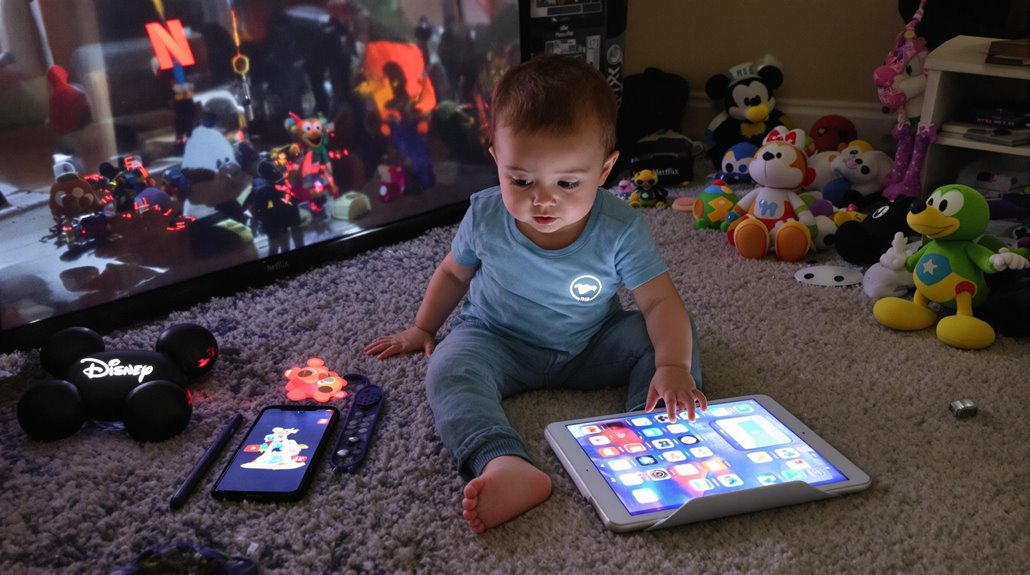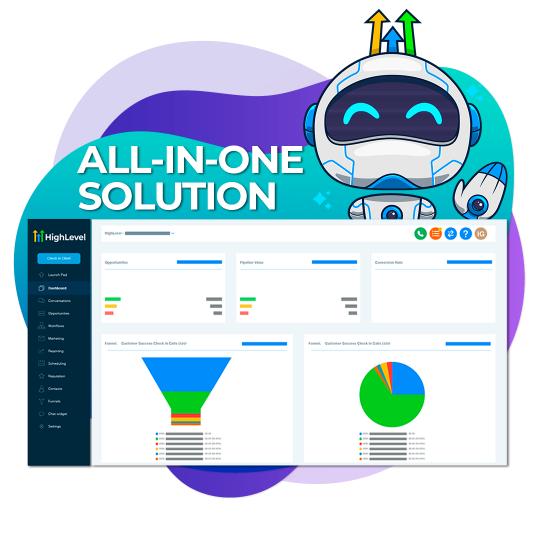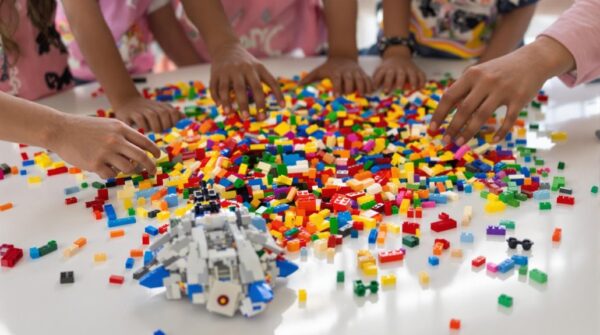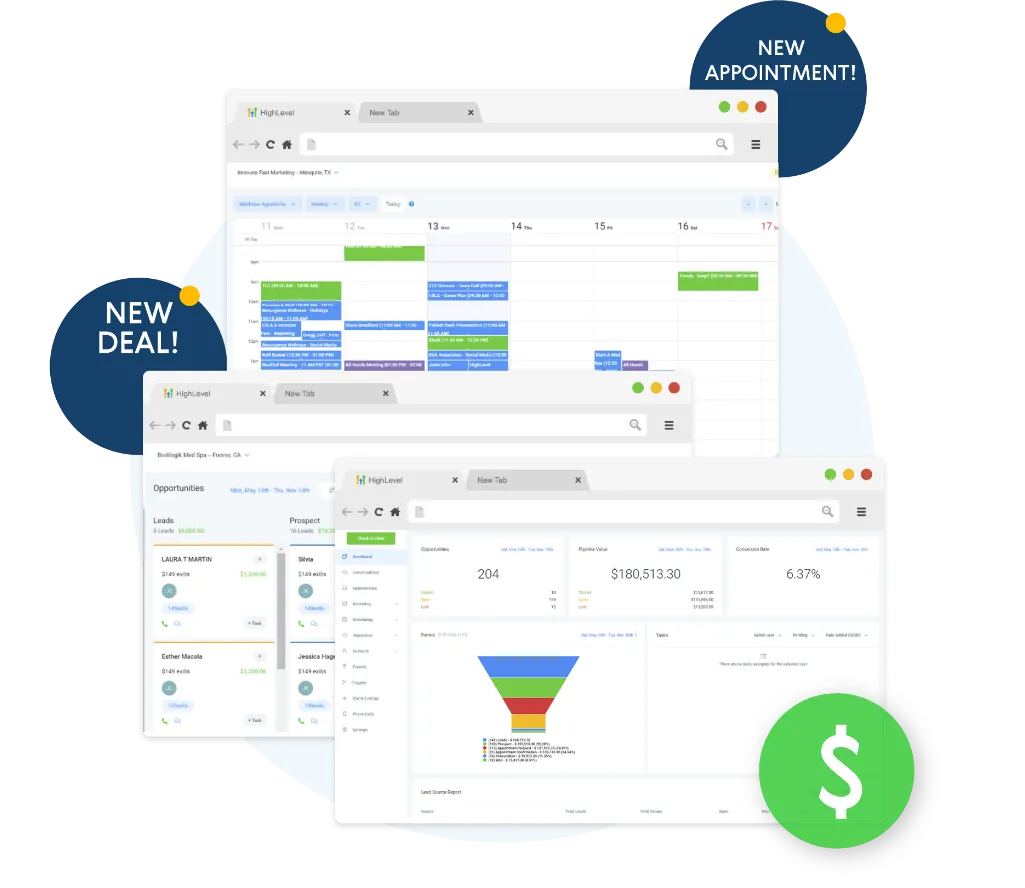Have you noticed how babies seem to know brand names before regular words? It's pretty amazing! Little ones today see over 550 brands in just one day of playing, eating, and looking around their home.
Babies start noticing brands when they're only 6 months old. By the time they're walking and playing more, around 18 months, they can pick out brand logos. When they turn 2, they know what many brands mean.
Kids watch what their parents do. When mom or dad uses a phone or buys certain things, babies watch and learn. They copy these actions, which makes them remember brands even more.
All this screen time and brand exposure is changing how our littlest ones learn to talk. Many parents are surprised when their baby's first word is the name of a favorite toy brand or food company instead of "mama" or "dada."
Tired of Losing Track of Customer Details?
Small business owners waste hours trying to remember customer information and follow-ups. A good CRM system puts all your customer data in one place, sends automatic reminders, and helps you make more sales without the stress. You'll never miss an important follow-up or forget a customer's preferences again.
👉 Try this popular CRM free for 14 days – Limited time offer!
Key Takeaways
Little babies see brand names everywhere they look – about 554 times each day! These logos and pictures become a big part of what they see as they grow.
When babies are just 6 months old, they start to notice brands. This happens right when they're learning their first words too.
By the time they're one and a half years old, babies can picture brands in their mind. Soon after, they learn what these brands mean.
These kids are born into a world full of screens. They see brand names on phones, tablets, and TVs all day long.
Parents talk about brands a lot and use them every day. This helps babies learn these names just like they learn other words.
Digital Natives From Day One
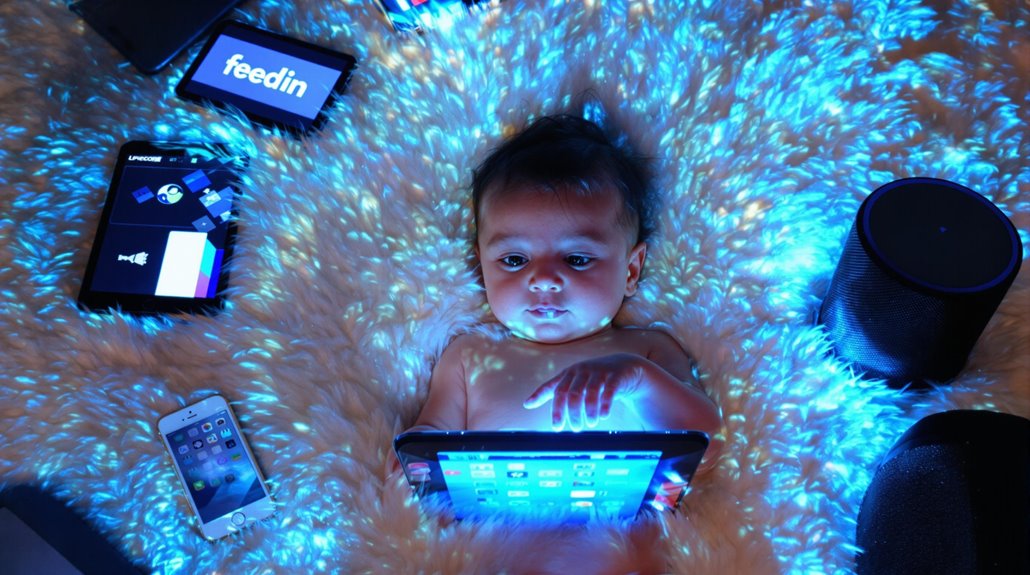
Kids today are born into a world full of screens and gadgets. These children, born after 2010, know how to use phones and tablets as easily as toys. Almost three out of four kids go online before they turn 12. Many even get their own tablets before they start first grade.
These young kids spend a lot of time watching shows and videos. They love YouTube and Netflix, and watch them for several hours each day. Their moms and dads often ask what they think about buying things. The kids know what brands they like and ask for them by name.
This new way of growing up with technology changes how kids learn and play. As they get older, they'll join other tech-smart people who help make big choices at work and at home.
Brand Exposure Starts at Birth
Your baby sees brands everywhere – at home, in stores, and at school. In fact, they see a new brand almost every minute! During a 10-hour day, that adds up to 554 times they spot a brand.
Babies learn about brands as they grow:
At 6 months old, they start to notice logos and bright colors.
By 18 months, they can picture brands in their mind.
Between 18-24 months, they begin to understand what brands mean.
Around age 3, they start asking for things they want by brand name.
These brands show up most often on things like food boxes, toys, and clothes your child sees every day.
Screen Time Shapes Language Development
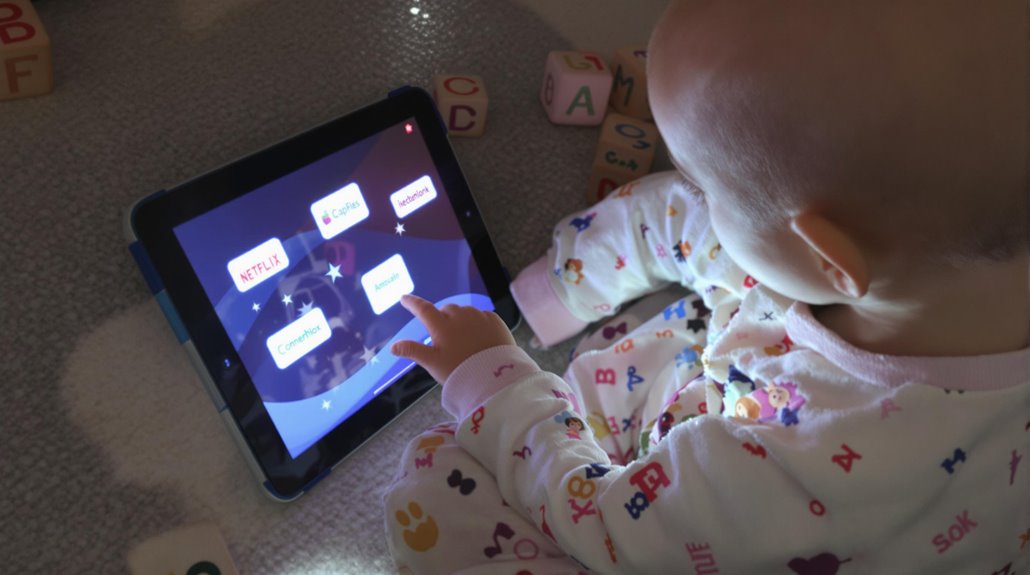
Screens can change how a child learns new words. When kids watch too much TV or play on tablets, they learn fewer words – about eight less for each hour they spend looking at screens.
Kids often copy what their parents do, so when mom and dad use phones a lot, kids want to do the same.
Even when kids watch shows meant to teach them things, too much screen time can still make it harder for them to learn words.
Today's young children are growing up in a world full of screens, and this shapes how they learn to talk.
Digital Vocabulary Takes Root
Kids today learn words in new ways because they use tablets and phones a lot. Just like you and me, they need help to learn the right words at the right time.
Four things help kids learn new words:
- Fun stories on screens can teach science words
- Good shows and apps help kids learn better than bad ones
- When grown-ups watch and talk with kids, they learn more
- Kids remember words better when they see them many times
Reading books is still very important.
Even though kids today are great with screens, they need to learn words in many ways. This means looking at how words connect, breaking big words into small parts, and hearing lots of different words every day.
Sick of wasting hours on marketing that doesn’t pay off?
What if you could skip the hard work and still grow your business?
Automate your marketing and see how easy it can be to save time and close more deals.
Discover the simplest way to take charge of your business!
Screen Habits Shape Speech
Screens can change how children learn to talk. The more time babies and toddlers spend with screens, the harder it can be for them to speak well later.
Think about a one-year-old who watches screens for two to four hours each day. By age two, they might've trouble talking to others. When little ones watch screens for more than four hours, they're much more likely to fall behind in speaking.
Even shows that try to teach kids can't beat real talking with people. Video games can also slow down how well kids learn to speak.
The best way to help your child learn words is to talk with them face to face. This means playing, singing, and chatting with your child is better than any screen time. When you talk with your child, you help them grow into a better speaker.
Early Brand Name Recognition
Kids today spend a lot of time looking at screens. Even tiny babies, just 6 months old, start to notice brand logos and mascots. Your child will learn about brands as they grow, and this becomes more clear around age 3.
There are four main steps in how kids learn about brands:
- First Look (6-12 months): Babies start to see and know simple brand pictures.
- Making Friends (12-24 months): Kids connect with fun brand characters.
- Social Thinking (24-36 months): Kids learn that some brands make people feel special.
- Picking Favorites (36-60 months): Kids choose the brands they like best.
Because kids see so many ads on screens, they often learn brand names and catch phrases early on. These words become part of how they talk and what they say.
Parental Purchasing Habits Matter
When parents and kids shop together, kids learn about choosing products and brands. Kids today help make many buying choices in their homes. In fact, they help decide how to spend $300 billion around the world.
Most parents listen to what their kids want to buy. Six out of ten parents say their kids play a big part in what goes in the shopping cart. Many families make shopping lists as a team. Parents and kids look at items and pick them out together.
Half of all families with young kids use shared lists to make shopping easier. When kids help pick items at the store, they learn good buying habits that will help them later in life.
Brand Loyalty Starts Early
Kids Learn to Love Brands Early
Babies can spot company logos before they can talk. They see colorful pictures like the golden arches or cartoon animals on TV. By the time they turn two, they know what these signs mean.
The special time when kids pick their favorite brands is from age 3 to 12. What they like as kids often stays with them when they grow up.
In fact:
- 1 in 4 kids keep loving the same brands as adults
- Most kids pick their favorite brands by age 10
- Kids help choose 9 out of 10 things parents buy for them
- Playing games with brand characters makes kids like them more
When kids play games on phones or tablets with brand characters, they remember these brands better. This is why many companies make fun apps for kids.
As a parent, you can help your child learn about different brands. Watch what they like and help them make good choices.
Parents Follow Kids' Choices
Kids Help Parents Shop Today
Moms and dads now ask their kids what to buy at stores. Almost 9 out of 10 parents say their kids help pick what goes in the cart. Kids don't just pick toys – they help choose food, TV shows, and where to eat dinner too.
Parents want their kids to join in when shopping more than ever before. When families go to the store, kids help pick what food to buy. They also help pick where to eat when the family goes out. Many parents let their kids add things to the online shopping cart at home. Parents care what their kids think and want them to be part of buying choices.
More and more parents say yes when their kids suggest what to buy. This is different from the past, when parents made all the choices on their own.
Now kids and parents work as a team when shopping.
Marketing in the Alpha Era
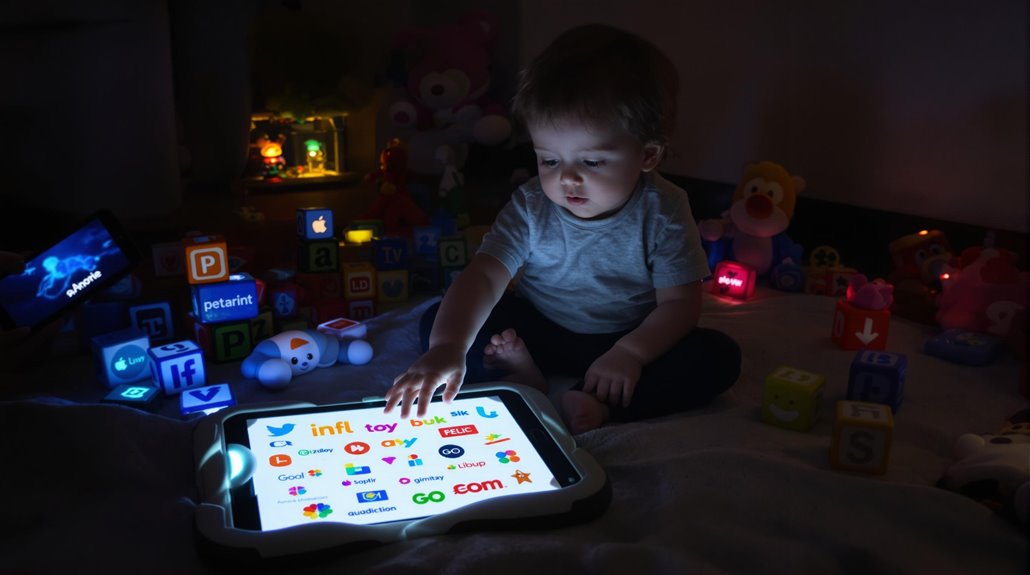
Marketing is changing because of kids born after 2010. We call them Generation Alpha. These kids grew up with phones and tablets. They love both online and real-world fun.
To reach these kids, brands must:
- Be where the kids are – on TikTok, Instagram, and YouTube Kids
- Make fun games and use cool phone tricks, but keep real stores too
- Talk to kids and their parents, since kids help pick what families buy
- Share real stories that teach good things and keep kids safe online
These kids move easily between screens and real life. Brands need to be smart and kind when talking to them.
They must also make sure parents feel good about what their kids see.
Building Tomorrow's Brand Ambassadors Today
Kids today love using phones and tablets. They'll grow up to be a huge group – about 2.2 billion by 2025. Brands want to make these kids love their products now, so they stay loyal fans later.
These kids trust people who make fun videos and posts online. More than half of what they want to buy comes from watching these creators. That's why brands need real people, not just famous stars, to share honest stories about their products.
The best way to make kids love a brand is to let them join in. When kids can make their own videos and play games with a brand, they feel like part of a team.
This builds a strong group of fans who'll stick with the brand for many years to come.
Conclusion
Kids these days are growing up in a world full of screens and brand names. Many toddlers say words like "iPad" or "Netflix" before they say "Mama" or "No." This happens because they see and hear these brand names all the time – at home, in stores, and on TV. Just like learning colors or animal names, brand names become a big part of how little kids learn to talk. It's interesting to think about how this will shape how they see the world as they grow up.
Stop Losing Track of Your Growing Customer Base
Managing lots of customers with spreadsheets or sticky notes is messy and slow. A CRM system helps you keep track of every customer, never miss a follow-up, and get more done in less time. Your business can grow faster when you have the right tools to manage it.
Try a free 14-day trial and see how much easier running your business can be →

